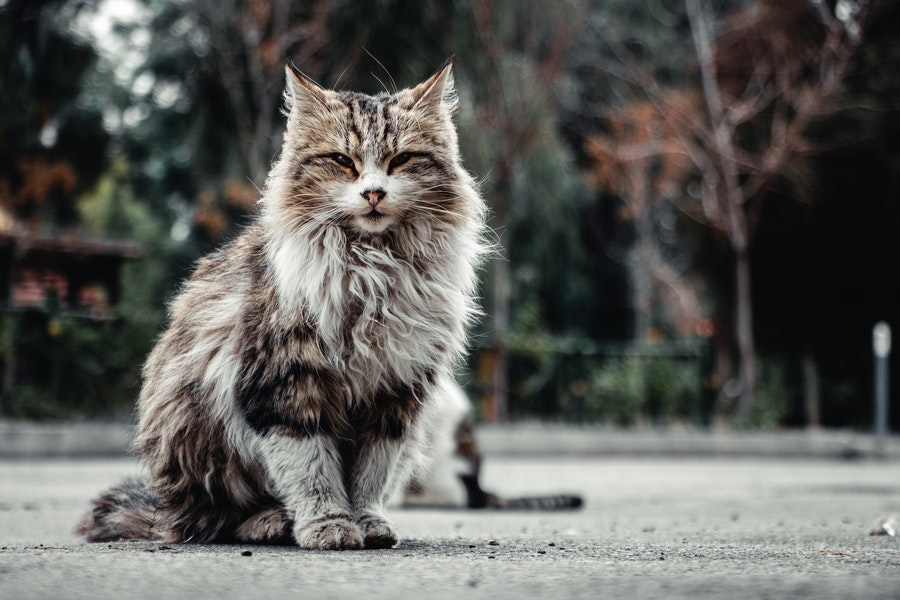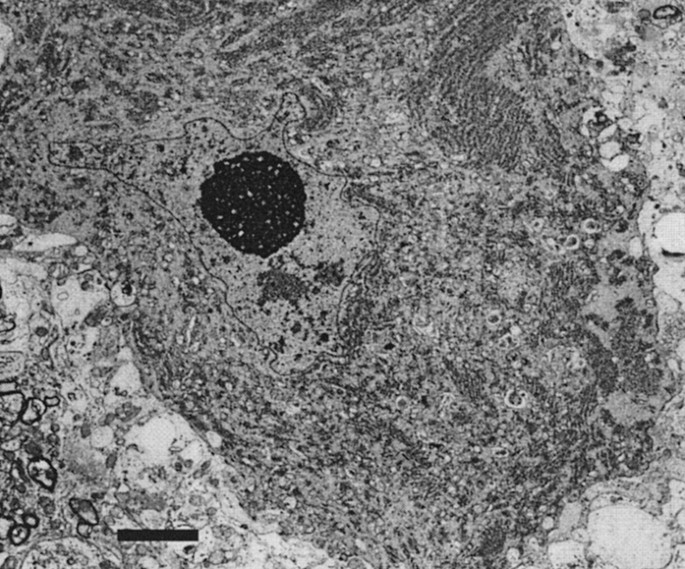Are you worried your gentle giant may have Maine Coon Spinal Muscle Atrophy? It’s a heartbreaking thought but don’t jump to any conclusions yet. Get the rundown first with our in-depth guide.
Spinal Muscular Atrophy (SMA) is a rare and fatal genetic disease found in Maine Coon cats. The disease causes the cat’s muscles to weaken and waste away. There is no cure for SMA, so it is important to be aware of the symptoms and get your cat tested if you think they may have the disease. Early diagnosis can help prolong your cat’s life. Treatment options are currently limited, but there are some things you can do to make your cat as comfortable as possible. Knowing what SMA is and how it affects cats can help you provide the best possible care for your furry friend.
In this post, we’ll discuss what SMA is, how it’s diagnosed, and the treatment options available to Maine Coon owners.
We hope this information will be helpful for those whose cats are affected by this debilitating disease.
What Is Maine Coon Spinal Muscular Atrophy?
We’re sorry to say that Maine Coon cats are particularly prone to Spinal Muscular Atrophy. This degenerative disease affects their spine and the muscles, leading to weakness and paralysis.
SMA causes the loss of spinal cord neurons (nerves) that control muscles in a cat’s limbs.
This leads to weakened muscles where cats find it hard to jump correctly. The earliest signs of SMA in Maine Coon cats become apparent at about 3 to 4 months.
What Are The Symptoms Of Spinal Muscular Atrophy?
In cats, the major presenting symptoms of Feline Spinal Muscular Atrophy are proximal limb weakness, decreased activity level, and abnormal gait.
Veterinarians often detect these changes by looking for any asymmetry in coordination (e.g. favoring the pelvic limbs or leading with one or both shoulder blades) and reduced muscle mass.
The atrophy may be worse on one side than the other according to which nerve is affected (discovered via an Electromyography (EMG) test).
Their reflexes may also be found to contract either too much or too little when a stimulus is applied during examination
A thorough examination from a veterinarian should be done to assess whether any underlying conditions are present that could cause this disorder as well.
Here are some of the most common symptoms of SMA in Maine Coon cats:
Tremors In Legs
Kittens who are born with SMA may show subtle tremors in their hind legs.
Muscle Weakness In Legs
When a kitten has SMA, the vet or other professional will notice that their hind legs are slightly weaker than normal.
Strange Posture
Sometimes a Maine Coon cat with SMA will stand with its back legs touching.
Unsteady Gait
Another sign of SMA in cats is when the animal begins to walk strangely and seems unsteady on its legs.
Declining Muscle Mass
Because the cat can’t use its back legs as often, the muscle mass in its legs begins to break down and decrease.
Difficulty Jumping And Climbing
A cat with Spinal Muscle Atrophy will find it difficult or impossible to jump up onto things like kitchen chairs or sofas. Landing from a height is also an issue because their legs are too weak to take the fall.
Lack of Motivation To Exercise
Due to the fact that they find moving about more difficult, cats with SMA will show signs of not being bothered moving at all.
As a result, they may often breathe heavily after any type of movement.
Spine Sensitivity
Their spine may show signs of hypersensitivity when being touched.
Why Do Cats Get Spinal Muscular Atrophy?
There are a few causes of SMA in cats. In Maine Coons cats it is genetic, meaning the cat was born with the disorder.
SMA is not to be confused with general muscle atrophy. This is caused by damage to the nerve cells, which can be due to an injury or some other disease process.

Is There A Cure For SMA?
There is no cure for spinal muscular atrophy in cats. However, there are things you can do to make your cat’s life easier.
Below are some of the preventative measures you can take to make your cat’s life easier around the home.
How To Treat Spinal Muscular Atrophy In Cats
As already mentioned there is no cure for spinal muscular atrophy in cats. Sadly there is no treatment for it either.
So, all you can do as a pet owner is try to look out for your cat as much as possible. Try these steps below:
Make Jumping And Climbing Easier
Firstly, even though they find it difficult to jump and walk about, cats with SMA are not discouraged from trying.
To make it easier for them to get to elevated areas consider buying shorter stools to keep near sofas and chairs.
Don’t Let Your Coon Outside
Secondly, the outdoors can be a dangerous place for cats. There are lots of high walls and other cats prowling the area.
For a cat with SMA it’s probably best to keep them indoors and away from any of these possible dangers.
It’s always good to take them outside from time to time but make sure it’s under supervision.
Keep Everything On One Level
Finally, try keeping all their food and water dishes on one level, preferably the ground level so they don’t have to jump up or down to get to it.
Anything you can think of that facilitates less jumping will be very helpful for your Maine Coon cat with SMA.
Muscle Atrophy In Cats
Muscle atrophy is a condition that results in the wasting away of muscle tissue. This can be due to a variety of factors, including disease, injury, or malnutrition.
In cats, muscle atrophy can occur in the hind legs due to a number of causes, such as chronic renal failure, hyperthyroidism, and arthritis.
When muscle tissue starts to waste away, the cat may become weaker and less able to move around.
It’s similar to ASM. However, muscle atrophy can also happen naturally especially as the cat begins to age.
How Long Does A Cat With Spinal Muscular Atrophy Live?
According to the NCBI, the life expectancy of a cat with SMA is about 8 years on average.
That’s not too bad and as long as the right conditions are put in place at home, the cat can live a long and happy life.
Maine Coon SMA Testing
Testing a Maine Coon for SMA is a relatively simple process that can be done by any veterinarian.
The test consists of taking a small sample of tissue from the cat’s spinal cord and examining it for the presence of SMA.
In the US, one source quotes about 40 USD for this procedure.
Additionally, in the UK another source quotes 48 pounds.
Other Maine Coon Spinal Issues
There’s a few other spinal problems that Maine Coon cats may suffer from. Below we’ve listed some of the most common.
Intervertebral Disk Disease
Intervertebral Disk Disease (IVDD) is a condition that affects the spinal cord in cats.
It is caused by the rupture or displacement of one or more of the discs between the vertebrae in the spine.
This can lead to compression of the spinal cord and subsequent damage to the nerves.
Symptoms of IVDD include weakness in the hind legs, reluctance or inability to move, and paralysis.
Spondylosis Deformans
Spondylosis Deformans is a type of arthritis that affects the spine.
It is most commonly seen in older cats and can cause stiffness, pain, and difficulty moving around.
Myelopathy from Feline Leukemia Virus
Myelopathy from Feline Leukemia Virus (FLV) is a neurological disorder caused by the FLV virus.
The virus affects the spinal cord, causing inflammation and damage to the nerve cells.
This can lead to a variety of symptoms, including weakness or paralysis in the legs, loss of coordination, and changes in urination and bowel habits.
Myelopathy from FLV is a serious condition and can be fatal if left untreated.
Maine Coon Gene Testing
There are a few genetic tests that can be done on Maine Coon cats. These tests can help determine the cat’s risk for developing certain diseases, or whether they carry certain genetic mutations.
Some of the genetic tests that can be performed on Maine Coon cats include:
- Spinal Muscular Atrophy(SMA)
- Polycystic kidney disease (PKD)
- Hypertrophic cardiomyopathy (HCM)
Head over here if you’re interested in finding out more about Maine Coon Health issues.

Conclusion
I hope you enjoyed learning about Maine Coon Spinal Muscular Atrophy.
If you have any questions, feel free to leave a comment below and I’ll do my best to answer them.
Additionally, if you know anyone who might be interested in this post, please share it with them!
SMA is a terrible disease that affects many cats so the more people who are aware of it, the better.
Elliot is the owner and lead writer at Lais Lairs. He is the proud owner of a Maine Coon/Siberian Mix cat named Lai. His oldest cat lived to be 18 years old so he’s learned a thing or two about keeping pets. When he’s not writing you can find him playing video games or playing fetch with Lai.
